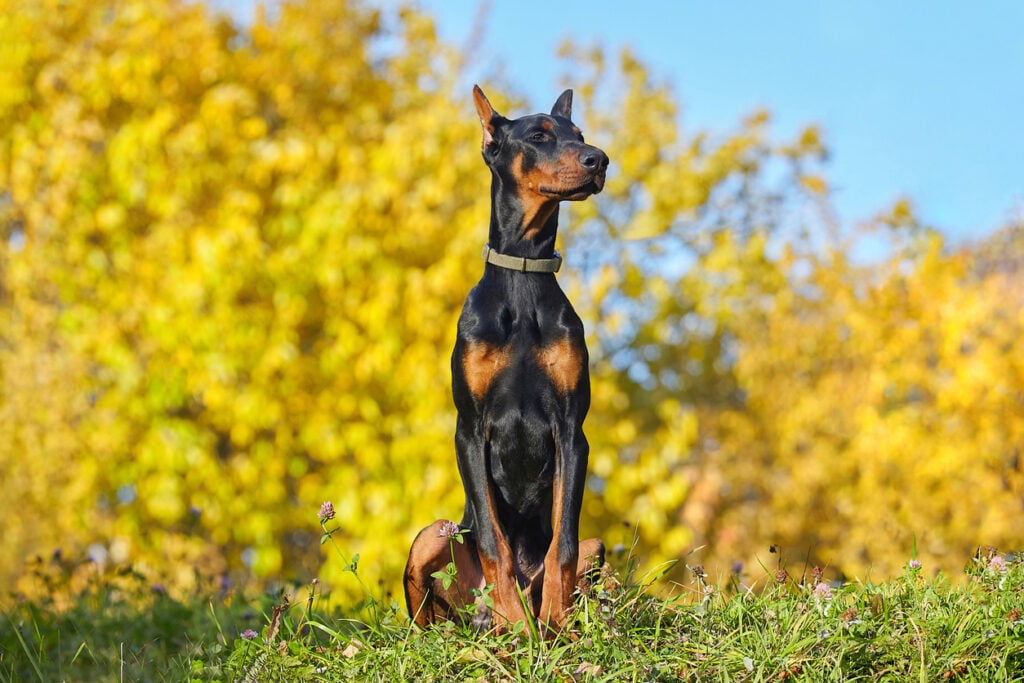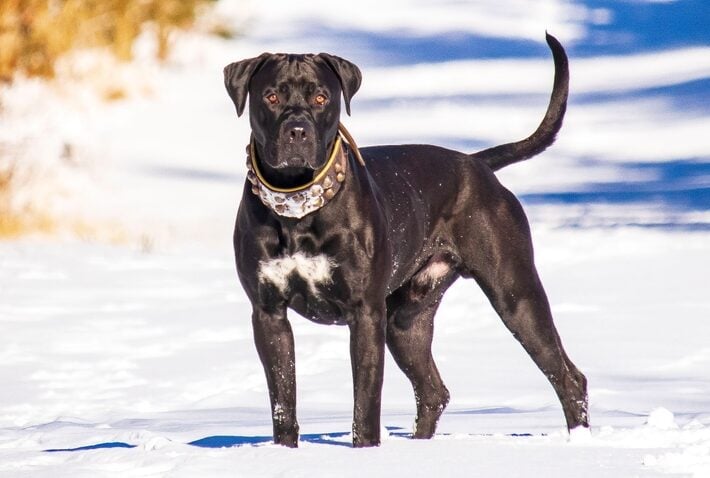These breeds carry power, drive, and a tough streak.

Not every dog is meant to curl up quietly on a couch. Some breeds come with serious muscle, sharp instincts, and tempers that demand respect. These dogs were shaped by centuries of guarding, hunting, and working under high-stress conditions, and the traits that made them effective then still exist today. For the right owner—experienced, confident, and responsible—these dogs can be extraordinary companions. For the unprepared, they can be a dangerous mismatch. Knowing the history and temperament of each breed isn’t just useful background, it’s essential for safe and successful ownership.
1. American Pit Bull Terriers carry powerful intensity.

Pit Bulls were originally bred for bull-baiting and later used in dog fighting, which left them with an ingrained drive and physical strength. While they can be deeply loyal to their families, they require steady leadership, rigorous training, and plenty of mental stimulation. When neglected or improperly socialized, aggression can surface quickly. Studies tracking dog-related injuries have consistently shown Pit Bulls to be among the top breeds involved in attacks, according to research from the American Veterinary Medical Association. Their reputation isn’t invented—it’s tied to a real behavioral risk when owners are careless.
2. Rottweilers remain formidable guardians with sharp instincts.

Rottweilers were shaped in Europe as cattle drovers and property protectors, giving them a natural suspicion of strangers and a strong bite force. Their guarding drive means they don’t hesitate when they sense a threat, which can escalate into aggression if not properly managed. Even well-socialized Rottweilers can act with alarming speed when protective instincts are triggered. Fatality data compiled in dog attack studies between the 1970s and 1990s consistently placed Rottweilers near the top of the list, as reported by the Centers for Disease Control and Prevention. Owning one means balancing love with constant vigilance.
3. Doberman Pinschers were bred for personal protection.

This sleek, intelligent breed was developed in the late 1800s by Karl Friedrich Louis Dobermann, a tax collector in Germany who wanted a fearless guard dog. That origin story explains their precision, loyalty, and sometimes unnerving intensity. Dobermans are quick learners, but their sharpness can turn to dominance or aggression if they sense uncertainty from their handler. They remain a staple in police and military work, their speed and accuracy still unmatched in many scenarios, as stated by the American Kennel Club. These dogs demand respect and thrive under confident, skilled ownership.
4. Cane Corsos channel an ancient guardian heritage.

Originating in Italy, Cane Corsos were bred to protect property and hunt large game. Their muscular build and unyielding presence alone can deter intruders. Yet beneath that intimidating look is a temperament that can swing into aggression if not firmly guided. They bond closely with their family but rarely tolerate strangers without suspicion. An inexperienced owner can quickly find themselves overwhelmed by the breed’s power and instinctual guarding drive. These dogs are steady protectors only in capable hands.
5. Presa Canarios have reputations that precede them worldwide.

Originally from the Canary Islands, these massive dogs were once used for cattle work and guarding. Their reputation grew darker when some were exploited in fighting rings. The combination of territorial instinct and sheer size means they need owners with both physical strength and deep training knowledge. Left unchecked, their aggressive tendencies can lead to devastating outcomes. With discipline and structure, however, they can be deeply loyal guardians. It’s a breed that is either a blessing or a disaster depending entirely on who owns it.
6. Akitas stand proud but react with quick force.

Akitas come from Japan, where they were bred as hunting dogs capable of taking down large game like boar and even bears. Their quiet confidence can fool some into thinking they are gentle giants, but Akitas are known for sudden bursts of aggression toward other dogs or perceived threats. Their independence makes them challenging to train, and they often test boundaries. Owners who don’t assert control early often find themselves overpowered by an intelligent, stubborn animal unwilling to back down.
7. Alaskan Malamutes harbor primal energy and drive.

At first glance, Malamutes resemble Huskies, but their temperament is far more intense. They were designed to haul heavy loads in extreme Arctic conditions, and that demanding origin left them strong-willed and hard to control. Malamutes can be highly aggressive toward other animals, particularly dogs of the same sex, making them unsuitable for casual pet owners. Their strength combined with their independence can turn them into a serious challenge if their needs aren’t met. With the right handler, they are magnificent working companions—but they are never passive house pets.
8. Bullmastiffs remain heavyweights with an explosive streak.

Bred to help English gamekeepers track and pin poachers, Bullmastiffs were selected for power and intimidation. That history shows up today in their protective instincts and unpredictable aggression when they feel provoked. While they are often affectionate with family, outsiders are not given the same courtesy. Their massive size only amplifies the risk when aggression emerges. Calm leadership is essential for managing their strength, and even then, they are not suited for beginners. They offer security and loyalty but demand total control from their owners.
9. German Shepherds carry both brilliance and sharp aggression.

German Shepherds are celebrated for intelligence and trainability, but their protective drive and strong territorial instinct can make them dangerous without structure. Police and military units prize them for their ability to balance aggression with control, but that balance can tip in households where owners lack authority. Their biting incidents remain high across studies of canine aggression, though much of it traces back to poor training or lack of stimulation. They are extraordinary workers when guided correctly, yet they can be a hazard if underestimated.
10. Chow Chows combine independence with sudden reactivity.

The lion-like Chow has one of the oldest pedigrees in the canine world, originally serving as both hunter and guard in China. Their aloof nature can turn to hostility quickly, especially toward strangers or other animals. They are not eager to please, making them notoriously difficult to train. Owners often misread their quiet behavior as calmness, only to be surprised when aggression flares. This is not a breed for novice dog lovers—it’s one that requires careful handling and constant awareness.
11. Belgian Malinois are intense beyond ordinary expectations.

This breed has skyrocketed in popularity due to its use in military and police work, but many underestimate what makes them suitable for those jobs. Belgian Malinois are fiercely driven, with an energy level that borders on unmanageable for average households. Their aggression is often sparked by boredom or insufficient exercise, and their speed makes those moments dangerous. Experts frequently warn that they are one of the worst breeds for inexperienced owners, not because they lack loyalty, but because they possess too much raw drive.
12. Dogo Argentinos embody relentless hunting aggression.

Developed in Argentina in the early 20th century, Dogo Argentinos were bred to hunt big game like wild boar. Their muscular frame and fearless personality make them incredible hunters, but also risky companions. They are deeply loyal to family yet highly aggressive toward unfamiliar animals, often chasing conflict rather than avoiding it. Their intensity requires an owner who knows how to manage dominance and aggression. Left in the wrong hands, they can be a destructive force, but in the right home, they show the extraordinary loyalty of a born protector.
